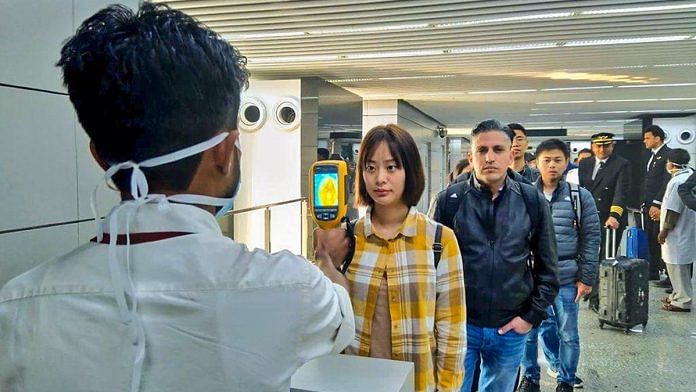New Delhi: Coronavirus cases are sharply rising in China, and the death toll has reached 25. At the epicenter of the epidemic is the Chinese city of Wuhan, and the government has decided to quarantine it.
This comes at a time when the country is set to usher in the Lunar New Year (25 January), which involves a week-long holiday and families travelling across and beyond the country.
The Chinese health authorities said Friday there are currently 830 confirmed cases of coronavirus infection until now. The virus is said to have spread to Thailand, South Korea, Japan, and the United States, apart from mainland China and its surrounding regions of Taiwan, Macau, and Hong Kong.
Why shutting down Wuhan is necessary
The virus seems to have originated in the capital of China’s Hubei province, Wuhan. According to reports, the new strain of the coronavirus — previously not found in humans — seems to have spread to a human from a seafood market in Wuhan. At least 24 of those who died were from the Hubei province.
The Chinese health authorities confirmed the possibility of person-to-person transmission. While Chinese authorities maintain that there are just 1,072 cases in China, according to estimates by the Imperial College in London, there may be close to 4,000 cases in Wuhan itself.
In response, Chinese authorities have decided to enforce a complete shutdown of the provincial capital, a city of 11 million people.
“Beijing’s decision to quarantine Wuhan city in central China to try and contain a deadly disease outbreak presents unprecedented challenges as it is dealing with a city about five times the size of London,” noted a report in the South China Morning Post (SCMP).
Starting Thursday, the administration has decided to shut down all public transport and outgoing flights. Residents have also been asked to not leave the city, except under special circumstances and after the government’s authorisation.
Regardless of quarantining Wuhan, what is likely to make it harder to contain the further spread of the virus is the city’s status as a transport hub.
“Wuhan is a hub for several major high-speed railway lines that link it to China’s major cities; Beijing is four hours away by train, while it takes four and a half hours to reach Hong Kong, while Shanghai is almost six hours away,” noted the SCMP.
And during the Lunar New Year week, around 7 lakh people use those trains. This is the reason why Chinese authorities have blocked all of Wuhan’s major transport hubs and the highways linking the city to other major regions.
Responding to the growing crisis, Wuhan’s neighbouring cities Huanggang and Ezhou have also been shut down.
Also read: Coronavirus back in China — what you need to know about the virus and its deadly history
Chinese and international response
The spread of this new strain of coronavirus has reignited memories of the havoc caused in 2002-03 by the outbreak of another coronavirus, the Severe Acute Respiratory Syndrome (SARS). The outbreak had claimed nearly 800 lives then.
According to a report in The New York Times, coronaviruses can lead to symptoms such as “high fever, difficulty breathing and lung lesions”, and it might take up to two-weeks before the symptoms begin to show up after a person has been infected.
Preliminary research seems to suggest the virus is not as deadly as SARS, but the number of deaths still don’t represent its severity.
“In contrast with its secrecy over the 2002-03 Severe Acute Respiratory Syndrome (SARS) that killed nearly 800 people, China’s communist government has provided regular updates to avoid panic ahead of the holidays,” said a Reuters report.
World Health Organization’s (WHO) Director-General Tedros Adhanom Ghebreyesus also praised Chinese government’s actions as “very strong” but did recommend it to do more in order to limit “international spread”.
On Thursday, however, Ghebreyesus said it was too early for WHO to declare the epidemic as a “public health emergency of international concern” (PHEIC). According to WHO’s guidelines, for an outbreak to be termed as a PHEIC, it needs to fulfill two criteria — the outbreak needs to affect more than one country, and it requires “a coordinated international response”.
“Make no mistake, this is, though, an emergency in China. But it has not yet become a global health emergency. It may yet become one,” he told the media Thursday.
WHO has declared five PHEICs over the past decade — the Zika epidemic of 2016 and the Ebola outbreak in 2019 were the last two PHEICs.
Also read: If Ebola, Zika and Nipah can cross borders, so can technology. That’s where solution lies






